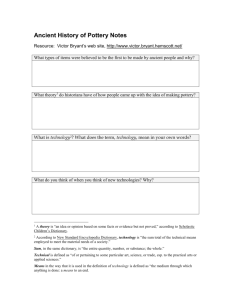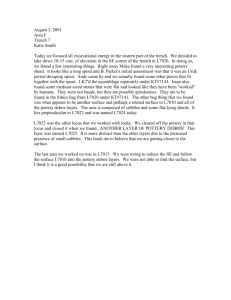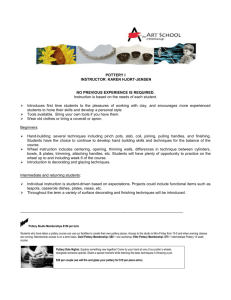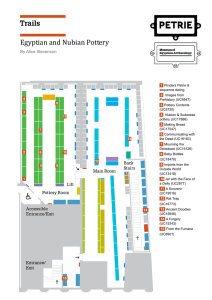Extra Credit Quiz7 Problem 1. Heat Transfer and the Mean... Credit for this problem will cancel missed credit from any...
advertisement
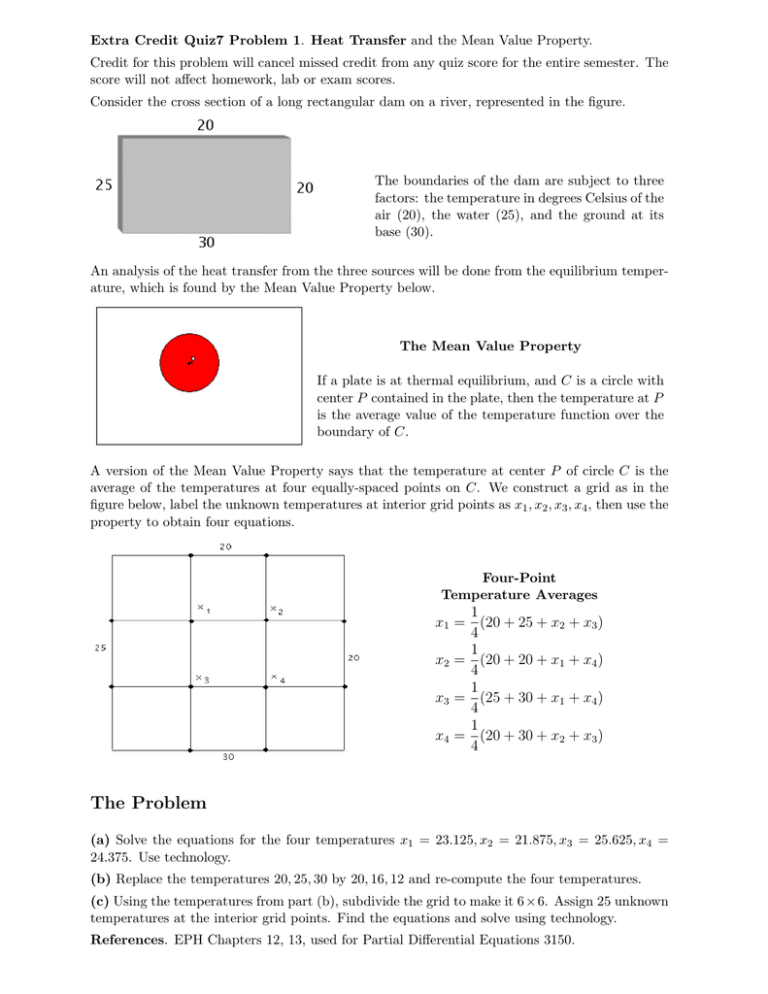
Extra Credit Quiz7 Problem 1. Heat Transfer and the Mean Value Property. Credit for this problem will cancel missed credit from any quiz score for the entire semester. The score will not affect homework, lab or exam scores. Consider the cross section of a long rectangular dam on a river, represented in the figure. The boundaries of the dam are subject to three factors: the temperature in degrees Celsius of the air (20), the water (25), and the ground at its base (30). An analysis of the heat transfer from the three sources will be done from the equilibrium temperature, which is found by the Mean Value Property below. The Mean Value Property If a plate is at thermal equilibrium, and C is a circle with center P contained in the plate, then the temperature at P is the average value of the temperature function over the boundary of C. A version of the Mean Value Property says that the temperature at center P of circle C is the average of the temperatures at four equally-spaced points on C. We construct a grid as in the figure below, label the unknown temperatures at interior grid points as x1 , x2 , x3 , x4 , then use the property to obtain four equations. Four-Point Temperature Averages 1 x1 = (20 + 25 + x2 + x3 ) 4 1 x2 = (20 + 20 + x1 + x4 ) 4 1 x3 = (25 + 30 + x1 + x4 ) 4 1 x4 = (20 + 30 + x2 + x3 ) 4 The Problem (a) Solve the equations for the four temperatures x1 = 23.125, x2 = 21.875, x3 = 25.625, x4 = 24.375. Use technology. (b) Replace the temperatures 20, 25, 30 by 20, 16, 12 and re-compute the four temperatures. (c) Using the temperatures from part (b), subdivide the grid to make it 6 × 6. Assign 25 unknown temperatures at the interior grid points. Find the equations and solve using technology. References. EPH Chapters 12, 13, used for Partial Differential Equations 3150. Extra Credit Quiz7 Problem 2. Archeology and the Dot Product. Credit for this problem will cancel missed credit from any quiz score for the entire semester. The score will not affect homework, lab or exam scores. Archeologist Sir Flinders Petrie collected and analyzed pottery fragments from 900 Egyptian graves. He deduced from the data an historical ordering of the 900 sites. Petrie’s ideas will be illustrated for 4 sites and 3 pottery types. The matrix rows below represent sites 1, 2, 3, 4 and the matrix columns represent pottery types 1, 2, 3. A matrix entry is 1 if the site has that pottery type and 0 if not. This is an incidence matrix. A= 0 0 1 1 1 1 0 0 0 1 1 0 Petrie Matrix. It is an incidence matrix in which the ones in each column appear together, like the matirx above. Counting Pottery Types. The dot product of row 2 and row 3 is 0, 1, 1 · 1, 0, 1 =0∗1+1∗0+1∗1=1 which means sites 2 and 3 have one pottery type in common. Please pause on this arithmetic, until you agree that the products 0 ∗ 1, 1 ∗ 0, 1 ∗ 1 add to the number of pottery types in common. Sites with pottery in common are expected to be historically close in time. Because pottery types evolve, old types cease production when newly created pottery types begin production, which gives meaning to the clustered ones in the columns of A. The Problem. Find a sequence of row swaps which starts with the incidence matrix C= 1 1 0 0 1 0 1 1 1 0 1 1 1 1 1 0 1 1 1 1 0 and ends with a Petrie matrix A. Express the swaps as elementary matrices E1 , E2 , . . . and write A as the product of elementary matrices times C. There is not a unique set of swaps, because of duplicate rows. You may use Kendall’s ideas with Robinson matrices or the simple definition of a Petrie matrix, given above. In any case, after finding Petrie matrix A, compute Robinson’s matrix R = AAT and apply the ideas in sample quiz 7, to double-check the answer. References. Edwards-Penney Sections 3.4, 3.5, 3.6. David Kendall’s 1969 work, Incidence matrices, interval graphs and seriation in archeology. W. S. Robinson, the method for chronologically ordering archeological deposits, in the April 1951 issue of American Antiquity. The incidence matrix C was invented from an archeology exercise on Seriation of 7 Maryland sites based on 3 types of historical ceramics.




